Abstract
Carbon Resilience in Luxembourg project studied different methodologies regard capturing carbon with territorial analysis since their soil is a shared ground for all the common methodologies for capturing carbon, mostly the cycle goes in from air to plants and then to soils and circular cycle happens on and on thus focusing on the soil in this project had crucial significance for us. In a nutshell, the project focuses on planning strategies in two different sites in pursuit of increasing soil potential to capture more carbon with the use of soil, ecological corridors, riparian forests, and wetlands.
Introduction
This project illustrates the possibilities and studies interventions to capture Co2 in an efficient way. Reducing carbon footprint has been a priority since the global temperatures are increasing day by day. Use of fossil fuels, the release of inorganic gases, reduction in forest cover to name a few are affecting the carbon cycle in nature. The cycle which has existed in nature for billions of years together is disturbed and it’s time to restore it. The analysis of environmental, ecological factors along with human interventions is studied at all levels and its correlation to Carbon Sequestration.
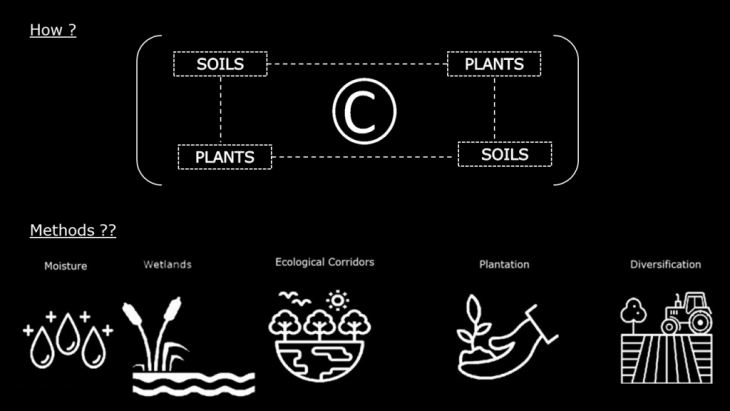
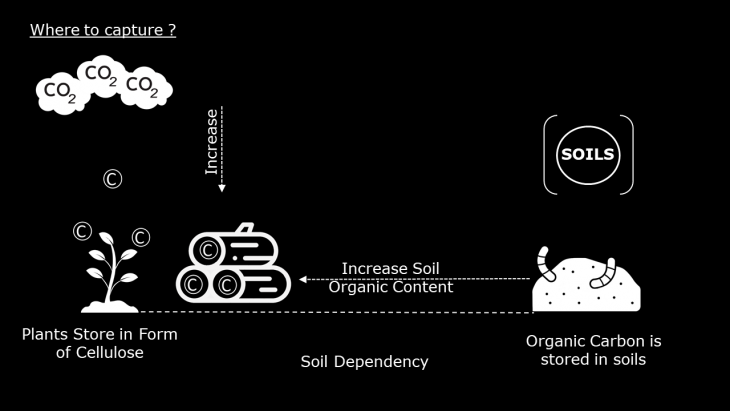
We analyzed Luxembourg to see the potential its geography has to sequestrate carbon. With so many different techniques and places to apply them, faculty added some constraints including the 500X500 area.
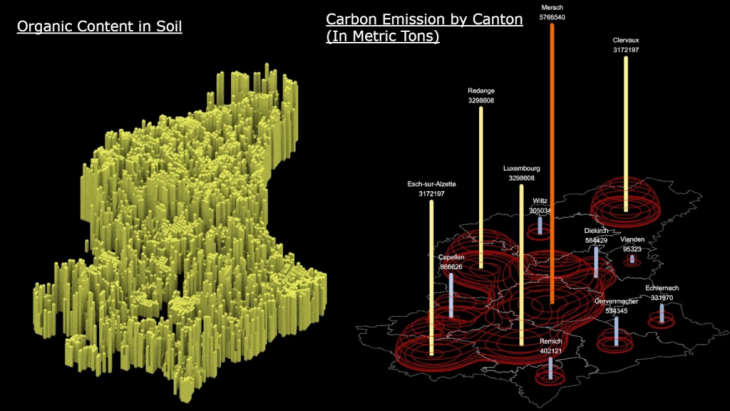
Sites
We identified two-level works one at the macro level around Junglinster Commune which is part of Ernz valley. The Black Ernz and The white Ernz extend their flood plains to the greater landscapes of the region. And another is Syre valley with wetland existence since historical times. The macro-level method intervenes with the Greater Ecosystem and long term permanent ways to sequester carbon.
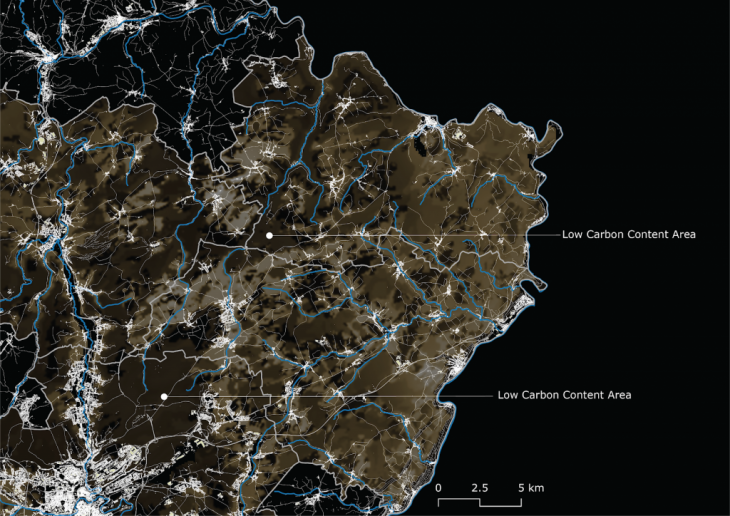
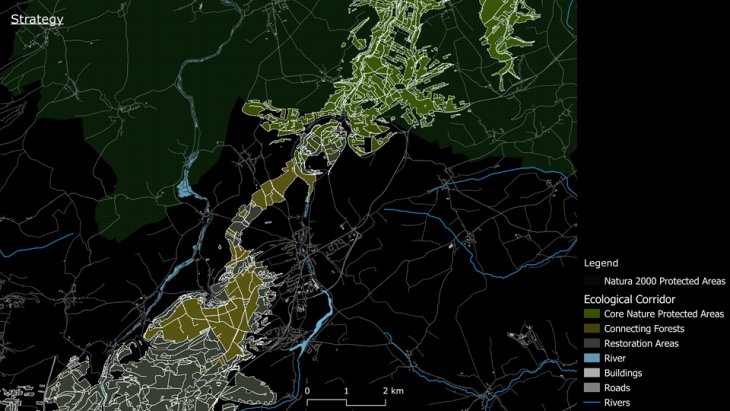
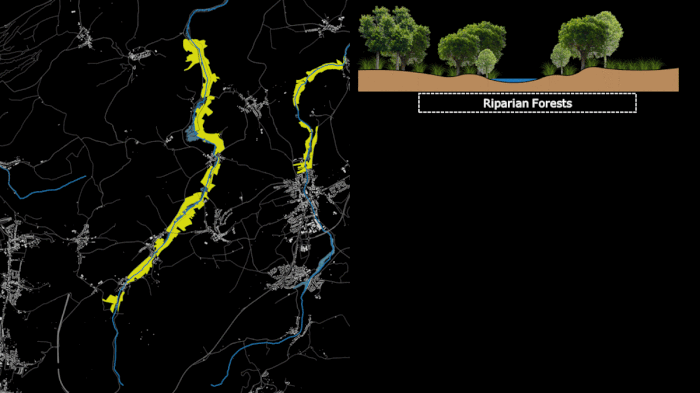
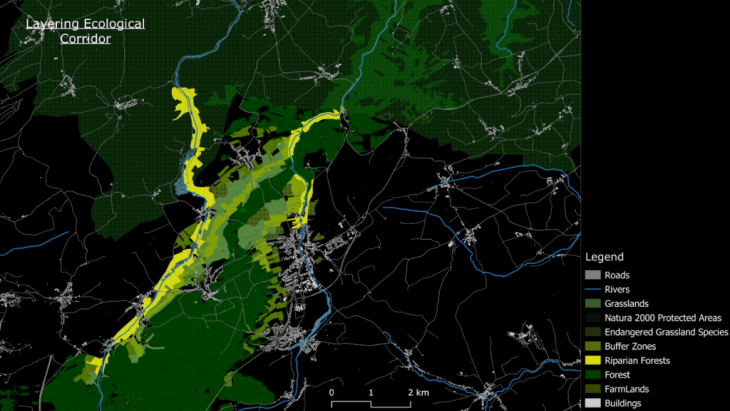 First, we researched the potential techniques to sequestrate carbon, then we decided which of them had the most likely chance to succeed. Some of the indicators were risk areas that had C02 in excess, but due to its changing nature, we decided to use soil organic carbon content as our baseline. The most degraded soil had a huge opportunity. Not much after we realized soil had to be integrated with a holistic approach, which included changing land uses, agricultural methods, and increasing general humidity in the area. Then we had to decide which scaled-down area could benefit the most.
First, we researched the potential techniques to sequestrate carbon, then we decided which of them had the most likely chance to succeed. Some of the indicators were risk areas that had C02 in excess, but due to its changing nature, we decided to use soil organic carbon content as our baseline. The most degraded soil had a huge opportunity. Not much after we realized soil had to be integrated with a holistic approach, which included changing land uses, agricultural methods, and increasing general humidity in the area. Then we had to decide which scaled-down area could benefit the most.
Going back to the country level we realized Luxemburg had two different geographies. Oesling in the north, and Gutland in the south. Oesling area is part of the Ardennes mountain region, has a fewer population, and is less agriculture intensive than the south. Gutland has a river network with multiple floodplains, and most riparian forests were wiped out in the past to make way for cattle grasslands and agricultural land. We saw an opportunity in using this existing ecological infrastructure.
Analyzing east Gutland circuitscape, we saw a potential connection area just northeast of Luxemburg airport, with already existing wetlands. So we did research and found out the area is called Syr valley and used to have more wetland areas, we ran a Caesar simulation and saw water activity on the east wing. We also noticed that natura2000 already protected the south and west wings, making it easier to intervene on-site. There were clear site differences between the different administrative divisions, Schuttrange commune having the most wetland area. We saw a potential conversion from grassland to a wetland which is also less expensive compared to other land-use changes.
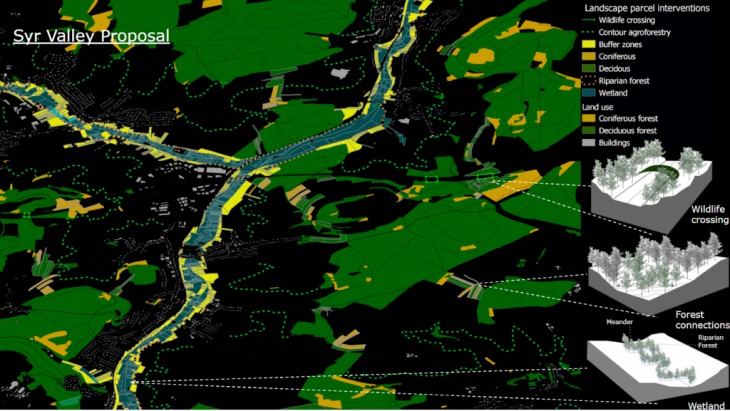
Stakeholders
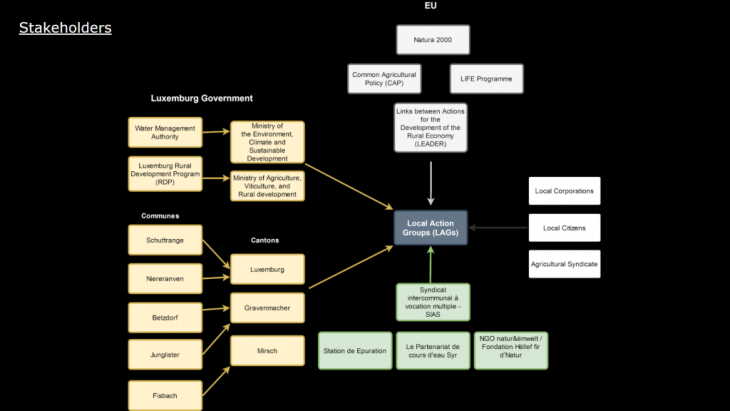
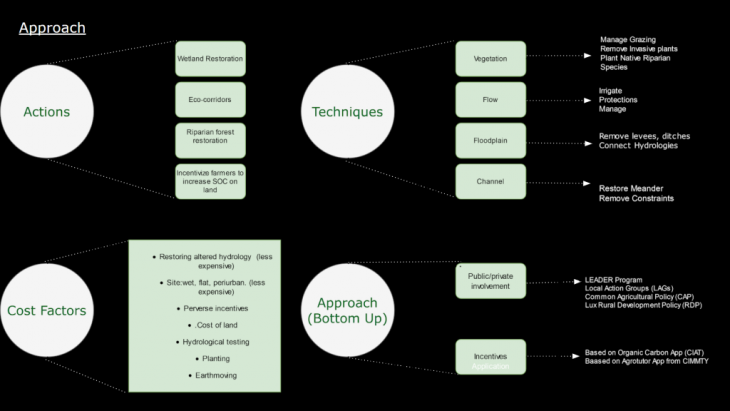
Mobile App
For the purpose of this, we made a mobile application, with the purpose of creating communication between government and farmers to increase the farmer’s engagement in the project to see their land before and after intervention plus tutoring for their intervention at micro-scale.
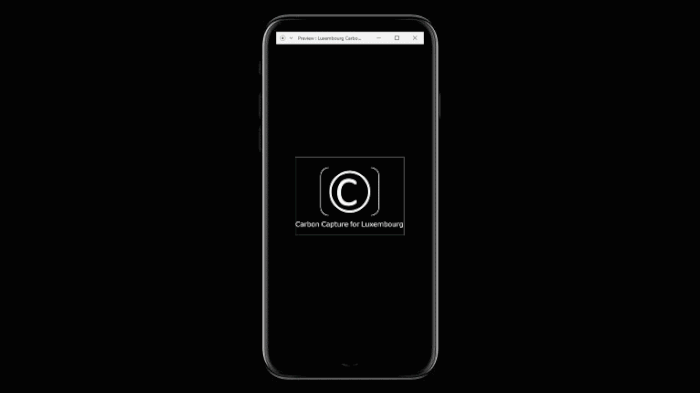
Luxembourg Carbon Resilience is a project of IAAC, Institute for Advanced Architecture of Catalonia developedat Master in City & Technology in 2020/21 by student: Sasan Bahrami, Kshama Patil, Miguel Angel Tinoco Hernandez, Juan Pablo Pintado Miranda, and faculty: Eduardo Rico, Mathilde Marengo & Iacopo Neri